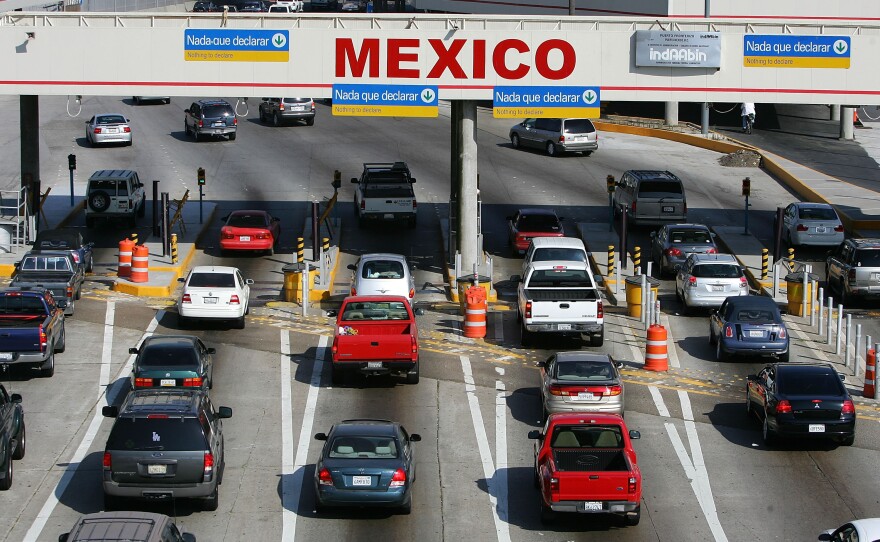Two years after the Secretary of Homeland Security, Janet Napolitano, ordered federal agents to beef up inspections of cars leaving the U.S. for Mexico, drivers can still slip through most southbound border lanes undetected.
A recent report by the United States Government Accountability Office, or GAO, says that 48 of the 118 southbound border lanes, headed into Mexico, lack license plate readers.
Plate readers keep a log of cars that cross the border. U.S. law enforcement authorities say the information is essential to investigating crimes like gun and drug trafficking, money laundering and kidnapping.
“To check to see if a suspect has fled to Mexico, we contact Customs and Border Protection, that monitors the plate readers," said Lon Tuner, a Chula Vista Police Department spokesman. "We can learn about a suspect’s border crossing patterns, and can focus our resources, instead of spending extra time chasing down dead end leads.”
Two years ago, DHS’s Napolitano asked CBP to step up its searches of vehicles leaving the country in order to catch more guns and cash headed south across the border to Mexico. CBP did, occasionally setting up checkpoints at border crossings.
In 2010, Napolitano said CBP had deployed more plate readers to the border. She touted that as progress.
However, the GAO says, for example, the $65 million in illicit cash that CBP seized along the border during the last two years is a pittance compared to the estimated $18 to $38 billion in illicit proceeds smuggled to Mexico annually.
The GAO says CBP needs to do more, and part of the problem is the lack of plate readers in southbound lanes. Further, a federal agent with decades of law enforcement experience on the border said CBP needs to upgrade any new plate readers it adds, because CBP's current technology is outdated.
CBP officials will not say which border crossings or lanes don’t have license plate readers. They responded only via email, saying plate readers are one of many tools the agency uses and that they plan to deploy more readers to the border this year.
License plate readers are also useful in stolen car investigations. The four border states and Nevada include the nation’s top ten cities for stolen cars, according to the National Insurance Crime Bureau.
Nevertheless, law enforcement officials say because CBP’s plate readers are positioned just feet from border crossings, they’re not particularly helpful for recovering cars and catching thieves, but more so to confirm that a stolen car has been taken to Mexico.
“Once cars are in Mexico, there’s not a lot we can do about it,” said Steve Witte, director of San Diego’s Regional Auto Theft Task Force,
Kean McAdam, who directs the Federal Drug Interdiction Group (HIDA) in San Diego and Imperial Counties, has been trying to post license plate readers away from the border for the last two years.
“In addition to plate readers on all southbound lanes, posting readers about 10 miles from the border would help us take action on suspected loads of cash, contraband and weapons before a car got to the point that it would immediately cross into Mexico,” said McAdam.
Technical glitches with the plate readers, funding and getting permission from California’s highway agency, Caltrans, to hang the cameras over freeways have delayed the plate reader project, added McAdam.
“The gains to public safety if we get these cameras would be equivalent to the gains made by putting radios in patrols cars,” said McAdam.
Meanwhile, the GAO report says CBP does not have any license plate readers on the Canadian Border. U.S. federal authorities say Canadian drug trafficking organizations smuggle significant amounts of cash proceeds from U.S drug sales across the border to Canada.







